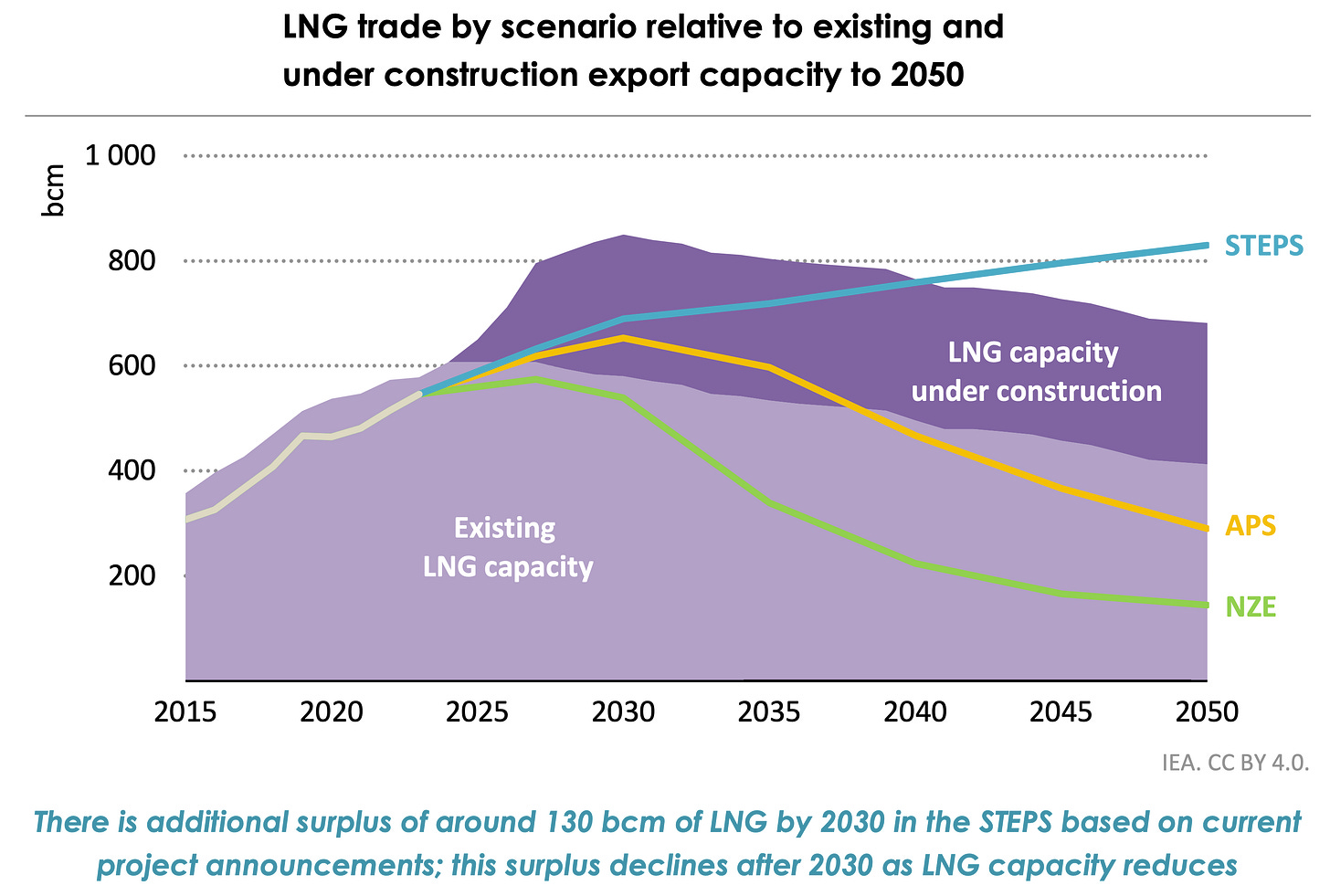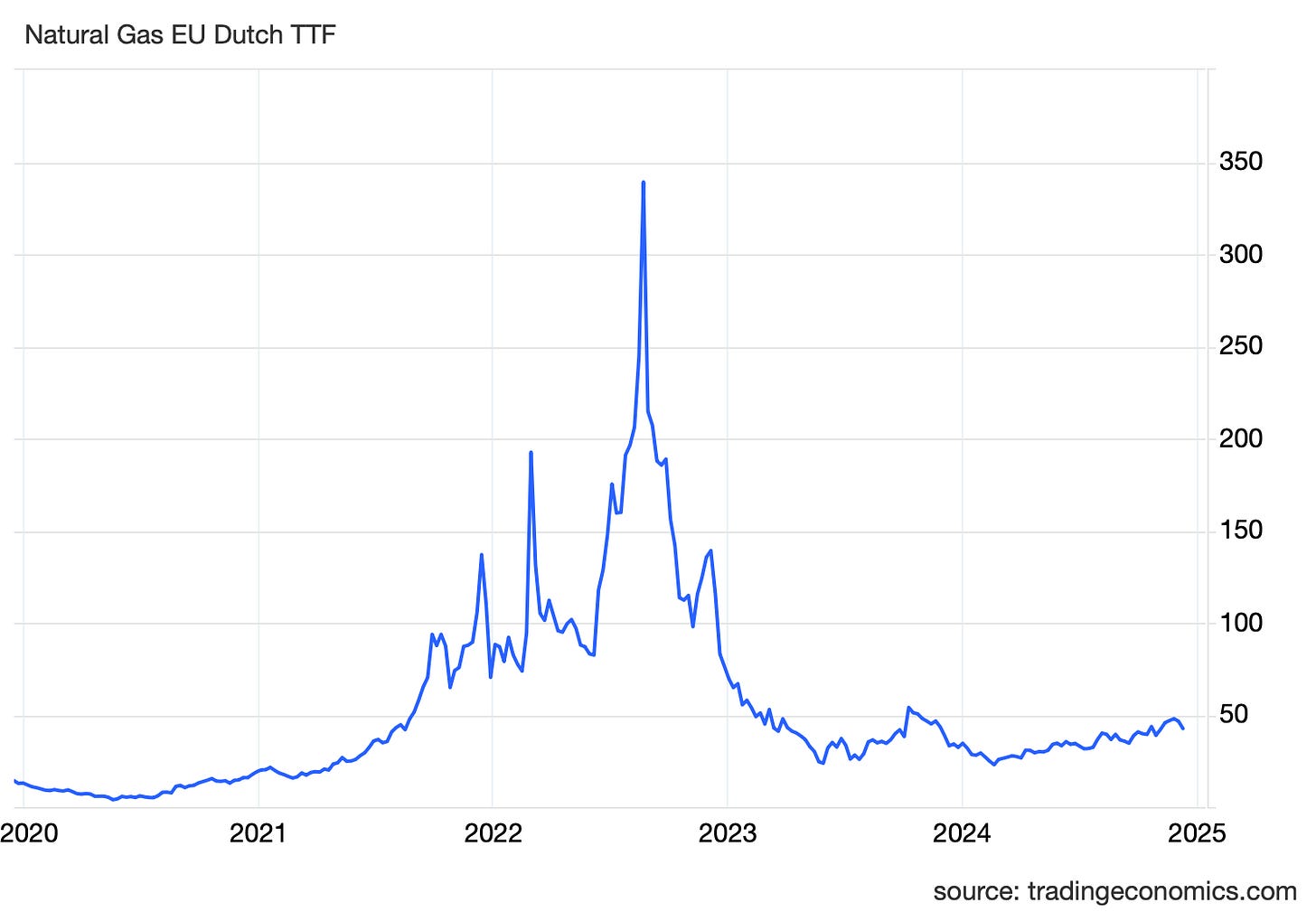LNG in Transition: Balancing Oversupply, Emerging Demand, and the Path to Net Zero
The LNG market faces a looming oversupply, with emerging demand in trucks and ships playing a pivotal role in shaping its future amid the global energy transition.
LNG Price Outlook: Demand and Supply Dynamics
Globally, the world is heading toward an LNG supply glut that could persist for several years—or even the next two decades. If the world becomes heavily reliant on LNG by 2030, Russia's decision to invade Ukraine in 2022 will have played a significant role.
The EU had previously been highly dependent on Russian gas for energy. However, the war sent shockwaves through the EU natural gas market, driving prices sky-high. As the EU began weaning itself off Russian gas, its demand for LNG surged, competing with Asia for limited supplies and causing LNG prices to spike.
The result of these high prices in the EU was the acceleration of numerous LNG projects worldwide, aimed at increasing supply to meet growing demand.
As we approach 2025 and look to the next two to three years, unprecedented levels of new LNG supply are set to enter the market. According to the IEA's World Energy Outlook, LNG liquefaction capacity is projected to increase by 50%, from 580 bcm today to 850 bcm by 2030.
The price shock of 2022 also influenced demand in several countries that were considering expanding LNG use to replace coal. The cancellation of demand-side projects means the new supply coming online will face an even smaller customer base.
According to the IEA, surplus LNG capacity in 2030 could reach 130 bcm, equivalent to 15% of total capacity under the Stated Policies Scenario (STEPS). If the world transitions more rapidly, such as under the Announced Pledges Scenario(APS) or the Net Zero Emissions Scenario (NZE), the surplus capacity would be even larger.
This excess supply is expected to keep LNG prices depressed, making it more attractive to energy consumers in the future.

To absorb the new LNG supply coming online, LNG producers would need to find significant sources of new demand. According to the IEA, this increase in demand would have to exceed projections in the Stated Policies Scenario (STEPS). Such growth could only materialize if progress on the energy transition slows. Any new LNG capacity, including projects initiated during the Trump presidency, would only add to the oversupply. Where emissions standards are stricter, like the EU, demand may not materialize, but for India and China rising LNG demand could derail the global energy transition.
Traditionally, LNG demand has been driven by its role in replacing coal, particularly in countries that remain heavily reliant on it. However, LNG is considerably more expensive than coal, which limits its adoption in certain markets.
Over the past two or three years, new demand options have emerged as the future outlook for LNG has become clearer. One of these areas is its use in ships and heavy-duty trucks. Historically, both ships and heavy-duty trucks have relied on diesel or similar fuels, which are difficult to decarbonize. Diesel’s high energy density and the exceptional reliability and efficiency of diesel engines have made it the gold standard for heavy-duty and long-distance transportation. It is precisely the superiority of diesel and diesel engines, along with their low-cost operation, that makes them indispensable for the grueling, backbreaking work of sustaining the sinews of a globalized world—qualities that also make them exceedingly difficult to replace.
Yet, as the world moves toward net-zero emissions, alternatives to diesel will become necessary. Diesel is not only a significant source of carbon dioxide emissions but also produces a mix of noxious pollutants harmful to health. This issue is particularly acute in the smog-ridden cities of Asia, where air quality already poses serious public health challenges.


